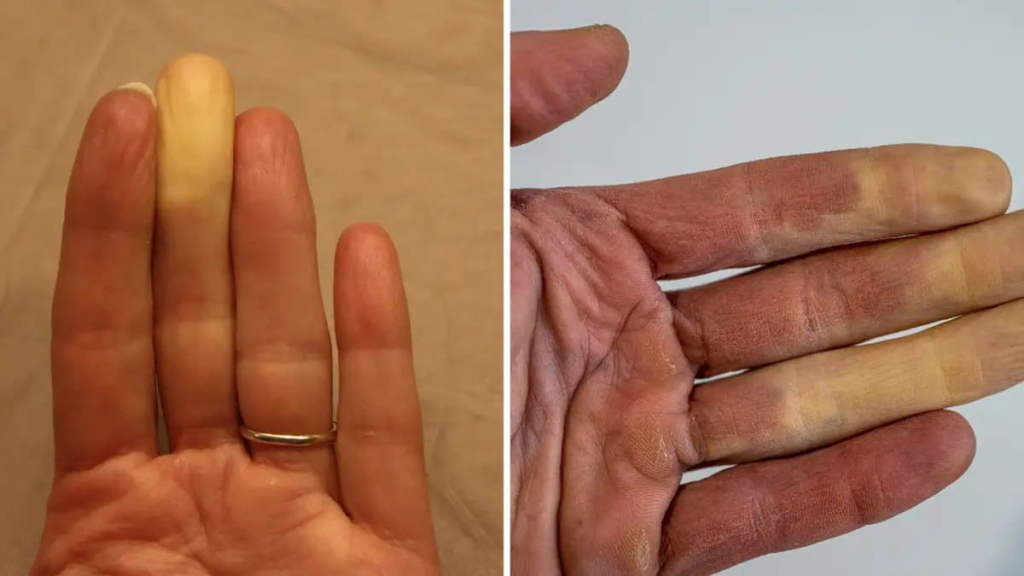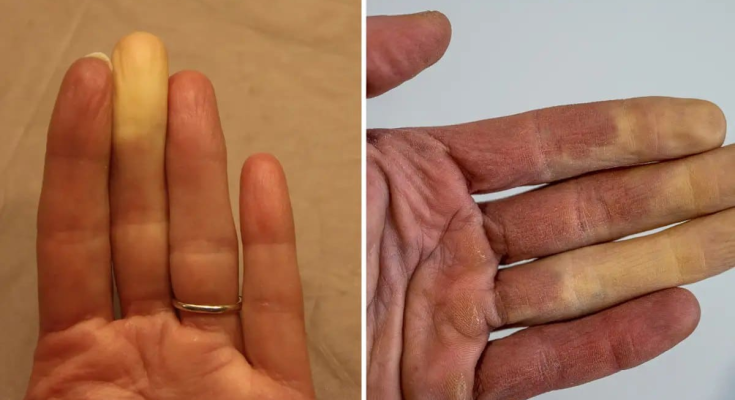Have you ever noticed your fingers suddenly turning ghostly white or even blue when you step into the cold?
While it may seem like a normal reaction to low temperatures, it could actually be a sign of an underlying condition known as Raynaud’s phenomenon.
This peculiar and sometimes unsettling reaction occurs when the small blood vessels in certain parts of your body—usually your fingers and toes—abruptly tighten, restricting blood flow and causing your skin to change color and sensation.
But what exactly triggers this response, and when should it raise a red flag? Let’s dive deeper into this fascinating and sometimes misunderstood condition.

Raynaud’s phenomenon is a vascular condition in which the small arteries that supply blood to your fingers, toes, and sometimes other areas like the ears, nose, lips, or even nipples, temporarily constrict in response to cold temperatures or emotional stress. This reaction reduces blood flow to the affected areas, causing the skin to turn white or even bluish due to lack of oxygen.
During an episode, you might notice that your fingers or toes feel cold and numb. As blood flow gradually returns, the skin can become red and might tingle, burn, or even throb—a phenomenon sometimes referred to as “Raynaud’s attack.” While fingers and toes are the most commonly affected, any area with small blood vessels can potentially be involved.
What Triggers Raynaud’s?

Episodes are typically triggered by exposure to cold—such as chilly air, holding a cold drink, or even air conditioning—but emotional stress can also set off an attack.


